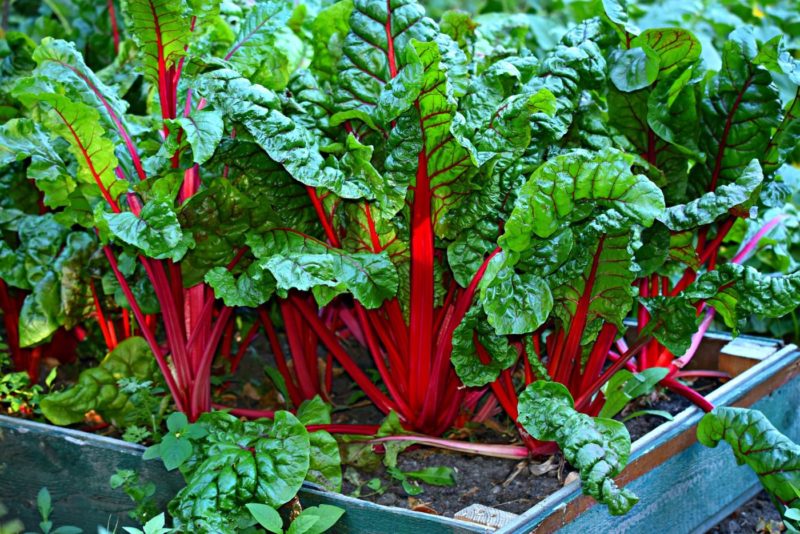Discover the Colorful World of Chard Varieties: Which One’s Right for You?

Ever noticed how some people walk right past the chard at the farmer’s market, barely giving it a glance, while others scoop up bunch after bunch with a little sparkle in their eye? It’s not just about taste or color—there’s a psychological tug-of-war happening every time you pick a new variety for your garden or plate. Let me share what I’ve learned (sometimes the hard way) about why chard varieties succeed—or flop—for real people, and how you can use these insights to make choices that actually stick.

The Hidden Psychology Behind Chard Choices
Most advice says “pick based on looks” or “choose what grows well in your climate,” but here’s the truth: we often fail to follow through on growing (or eating) new vegetables because they don’t click with our underlying motivations. Are you motivated by novelty and visual excitement? Or do you crave reliability and minimal fuss? I’ve seen it firsthand—people who love showing off garden photos on Instagram get bored fast with plain green Fordhook Giant, while comfort-driven cooks swear by its steady harvests.
Why This Matters:
Understanding your own triggers is more powerful than any seed packet description. If you’re drawn to color and surprise, Rainbow Chard will keep your brain engaged; if you love routines and predictability, Fordhook Giant won’t let you down (and Perpetual Spinach is like the reliable friend who never cancels plans).

My Own Failed First Attempts
Let’s be real—my first try at Rainbow Chard was an unmitigated disaster. I went all-in for color without realizing my raised bed only got four hours of sun. The result? Stalks faded to pale yellow, leaves tasted bitter, and my enthusiasm fizzled out by midsummer. Only after talking with a fellow gardener did I realize: I’d matched my aspirational self (the one who wanted Instagram likes) instead of my real self (who prefers easy wins). I switched to Fordhook Giant in year two—and suddenly, gardening felt effortless.

Sensory Details: What Success Feels Like
When chard matches your motivation, the payoff isn’t just visual—it’s visceral. Imagine slicing through crisp magenta stalks for a salad; there’s a satisfying crunch under the knife and an earthy aroma that hints at beetroot. Or picture steaming Fordhook Giant leaves—the kitchen fills with a spinachy scent that practically begs for butter and lemon.
A client once told me they chose Bright Lights because “it felt like bringing fireworks into my lunchbox.” That same week, another gardener described Perpetual Spinach as “the green that never lets me down—even when everything else bolts.”

The Practical Path: Matching Variety to Mindset
-
If You Love Novelty:
- Go all-in on Rainbow Chard or Bright Lights.
- Place them where sunlight spotlights their colors—think front yard beds or patio pots.
- Plan for regular photo updates; sharing progress keeps motivation high.
-
If You Thrive on Routine:
- Stick with Fordhook Giant or Lucullus.
- Set up an automated watering schedule (try using a digital timer—I use Rain Bird).
- Focus on batch-cooking recipes—soups, stews—that let these greens shine week after week.
-
If You Hate Fuss:
- Choose Perpetual Spinach.
- Mulch heavily around plants so weeds don’t sap your energy.
- Harvest early and often; small successes reinforce positive feedback loops in your brain.
Dialogue from the Field
Last summer at a community plot, I overheard this exchange:
- “Why does your chard look so much better than mine?”
- “I moved mine to where it gets afternoon sun—and stopped stressing about perfect spacing.”
That tiny tweak—a shift toward what worked for her specific conditions—turned frustration into pride in less than three weeks.
Making It Stick: The Real Solution Is Psychological Fit
Here’s something counterintuitive: The best chard variety isn’t always the highest-yielding or most beautiful—it’s the one that lines up with how you want to feel about gardening or cooking day after day. When you see visible progress (vivid stems growing taller each week), dopamine spikes keep you invested; when low-maintenance greens survive neglect during busy spells, relief reinforces loyalty.

Metrics from My Last Season:
- Rainbow/Bright Lights: Harvested 3–4 times per month from May–September
- Fordhook Giant: Produced enough for family dinners twice weekly—even during August heat
- Perpetual Spinach: Zero bolting across 100+ degree days in July; no replanting needed
Troubleshooting Through Behavioral Lenses
- Faded Colors? Instead of blaming yourself (“I’m bad at gardening”), reframe as an experiment (“What happens if I move this pot?”). Small environmental tweaks = big visual rewards.
- Bitter Leaves? Don’t tough it out; harvest younger leaves sooner next time. Quick wins build habits.
- Tough Stems? Turn problem-solving into creativity—slice stems thinly for stir-fry crunch or pickle them as tart snacks rather than tossing them out.
When slugs attacked my patch last spring, instead of despairing, I set up nightly patrols with a flashlight—a weirdly satisfying ritual that made every morning harvest feel hard-earned.
Action Steps Fueled by Psychology
- Reflect honestly: What makes YOU proudest—a colorful plate, consistent meals, minimal effort?
- Pick one main variety plus one wild card: Satisfy both comfort and curiosity—you’ll thank yourself later.
- Set reminders tied to existing habits: Water after morning coffee; harvest before dinner prep.
- Celebrate micro-successes: Snap photos of first sprouts; share dishes with friends—even tiny victories wire your brain for future effort.
- Iterate ruthlessly: If something flops (and it will), treat it as data—not defeat.
The greatest lesson chard taught me isn’t horticultural—it’s psychological resilience through experimentation and adaptation. Every season brings surprises… but picking varieties that fit your quirks ensures those surprises are mostly delightful ones.
So next time you find yourself paralyzed by seed catalog options or disappointed by lackluster growth—pause and ask not just what do I want to grow… but why do I want to grow it? Align those answers, and watch both your garden—and your enthusiasm—flourish beyond expectation.



